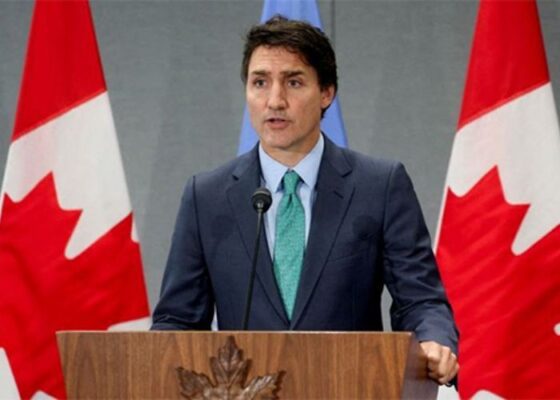
As an international student visa consultant with 7 years of experience helping students worldwide obtain Canadian study permits, I was surprised to learn that Canada plans to cut new foreign student visas by 10% starting in 2025. Read below about “Canada to Cut Foreign Student Visas by 10% in 2025—Here’s Why”.
This policy change has left many prospective international students confused and concerned about their plans to study in Canada. As someone experienced in this field, I’d like to provide some context on why Canada is making this change and what it means for foreign students hoping to study in Canada moving forward.
Table of Contents
Why is Canada Cutting Foreign Student Visas?

The Canadian government has stated that the planned 10% reduction in new foreign student visas is intended to ease pressure on the country’s education infrastructure.
In the past decade, Canada has seen a massive surge in international student enrollment. From 2010 to 2021, the number of study permit holders in Canada increased from around 100,000 to over 620,000. This rapid influx has strained many of Canada’s education resources.
By marginally reducing the number of new foreign student visas, the government aims to limit enrollment growth to more sustainable levels. This should help prevent overcrowding at Canadian schools and allow them to maintain high-quality education standards.
Another likely reason for the visa reduction is to incentivize schools to limit foreign student admission offers. Canada’s international student boom has been driven in part by universities and colleges actively recruiting abroad. With fewer visas available, schools may become more selective about which foreign applicants they admit.
What Does This Mean for Students Wanting to Study in Canada?
A 10% reduction in foreign student visas is unlikely to significantly impact most applicants’ chances of studying in Canada. Canada will still welcome over 500,000 new international students per year after the cut, which is substantially higher than pre-pandemic levels.
However, students may face slightly more competition for admission at Canada’s most popular schools and programs. Applicants will need to put extra care into crafting strong admission applications highlighting their academic excellence, language skills, and financial readiness.
Students should also be prompt in submitting applications and documents for both admission and study permits. Meeting all deadlines will be important for securing a spot.
It’s also wise for students to apply to a mix of competitive and less competitive Canadian schools. Casting a wide net will improve chances of admission somewhere. Students shouldn’t put all their hopes on just one or two big-name institutions.
Applicants should thoroughly research their program and school options rather than being swayed by rankings alone. Many less-known Canadian schools offer high-quality education at an affordable cost, without the intense admission competition of famous brands like University of Toronto or McGill.
Students interested in studying outside major cities may find it easier to secure Canadian student visas, as demand is lower for rural and smaller-city schools.
Will Reduced Visas Impact Work Rights for International Graduates?
Canada’s Post-Graduation Work Permit Program allows international students to work in Canada for up to 3 years after finishing their studies. This valuable program will not be directly affected by the 10% visa reduction.
PGWP work rights are tied to completing an eligible study program rather than the initial student visa itself. So international graduates should still have full access to this amazing opportunity to gain Canadian work experience and immigration eligibility.
In fact, the PGWP may become an even more important pathway for long-term Canadian residency if direct study permit numbers fall. PGWP holders with skilled Canadian work experience have a major advantage in Express Entry and provincial immigration draws.
International students should strategically choose programs that optimize their PGWP work rights. Completing a 1-year graduate certificate instead of a 2-year master’s degree, for instance, reduces the length of the permit. Students wanting the full 3-year PGWP should complete programs that are at least 2 years long.
Planning ahead for the PGWP can allow students to transition smoothly from studies to skilled Canadian work and permanent residence. The PGWP offers a great return on investment for foreign students in Canada.
How Else Might This Policy Change Impact International Students?
Beyond potentially intensified admission competition, there are a few other ways this visa reduction could impact foreign students:
- Tuition costs may rise at schools that depend heavily on international student revenue. Less enrolment may motivate some to increase tuition to compensate. Students should budget accordingly.
- Rental housing near campuses may become slightly easier and cheaper to find with slower international enrollment growth. Students may have better selection and negotiating leverage.
- Certain smaller programs and course sections that rely on international enrollment to run may be cut back or canceled. Program availability may shift over time.
- Extracurricular activities, festivals, and support services offered to international students could also face reductions if enrollment declines. Students may find fewer specialized offerings.
- Canadian students may have improved access to high-demand programs like business, engineering, and computer science with less competition from abroad. Domestic enrollment may increase.
Despite these possible impacts, Canada will certainly remain one of the world’s best study destinations. With flexible work rights, a tolerant society, and pathways to immigration, Canadian education offers huge value. This modest visa reduction is unlikely to dampen the experiences of future international students.
Key Takeaways on Canada’s Foreign Student Visa Changes
To summarize, here are the key points for international students on Canada’s upcoming visa changes:
- The 10% reduction aims to control rapid growth and ease pressure on Canada’s education system.
- Admission may become moderately more competitive at popular schools, so strong applications are important.
- Canada will still welcome over 500,000 new foreign students after the cut – higher than pre-pandemic.
- Post-graduation work rights via the PGWP will not be affected.
- Consider a mix of competitive and less competitive Canadian schools when applying.
- Leverage the PGWP program to gain skilled Canadian work experience and improve immigration eligibility.
- Research programs carefully rather than relying on rankings alone.
- Budget for potential tuition increases at some schools.
- Take advantage of possible improved housing and program availability.
- Canada will remain a top study destination despite the policy change.
As an experienced student visa advisor, I’m happy to answer any questions students have about how these upcoming changes may impact their Canadian study plans. Don’t hesitate to reach out!

Visa Expert, Arun Yadav is an accomplished immigration lawyer specializing in Spouse Visas, Visa consultant, Study Visas, and low-budget fund advising all across the world. With a Master’s degree in Immigration Law and 8+ years extensive experience in the field, Arun has cultivated a reputation for excellence and reliability by helping 3000+ clients for Visa consultation. He is dedicated to bridging education opportunities and securing visas for his clients. Explore expert advice and immigration tips on his Instagram profile: @visaexpertarunyadav. Follow his insightful content and benefit from his professional guidance in navigating the complexities of immigration law and visa acquisition.




